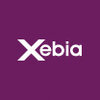


i
Xoriant
Work with us
![]()
Filter interviews by
Xoriant Associate Software Engineer Interview Questions and Answers
31 Interview questions
OOPs (Object-Oriented Programming) is a programming paradigm based on the concept of objects, which can contain data and code.
OOPs focuses on creating objects that interact with each other to solve a problem
Key principles include Inheritance, Encapsulation, Polymorphism, and Abstraction
Inheritance allows a class to inherit properties and behavior from another class
Encapsulation restricts access to certain componen...
Collections in programming refer to data structures that allow you to store and manipulate multiple elements.
Collections can be used to store groups of related data, such as lists, sets, maps, or queues.
They provide methods for adding, removing, and accessing elements within the collection.
Examples of collections in Java include ArrayList, HashSet, HashMap, and LinkedList.
Inheritance is a key OOP concept where a class inherits properties and behaviors from another class.
Inheritance allows for code reusability and promotes a hierarchical structure.
Example: Animal class can be a base class with properties like name and age, and subclasses like Dog and Cat can inherit these properties.
Subclasses can also have their own unique properties and methods in addition to the inherited ones.
Code in Python to print 'Hello, World!'
Use the print() function in Python to display the text
Enclose the text in single or double quotes
Yes, Python has a destructor called __del__()
The __del__() method is called when an object is about to be destroyed
It is used to perform cleanup operations before the object is destroyed
The __del__() method is not guaranteed to be called in all cases
Split() & Join() are string methods used to split a string into an array and join an array into a string respectively.
Split() method is used to split a string into an array of substrings based on a specified separator.
Join() method is used to join the elements of an array into a string using a specified separator.
Both methods are commonly used in data processing and manipulation tasks.
Example: var str = 'apple,ban...
Flask and Django are popular python frameworks for web development.
Flask is a micro web framework that is easy to learn and use.
Django is a full-stack web framework that provides many built-in features.
Other frameworks include Pyramid, Bottle, and Tornado.
Flask and Django both use the WSGI standard for serving web applications.
Flask is often used for small to medium-sized projects, while Django is better suited fo...
Lists and arrays in Python are both used to store multiple values, but they have some key differences.
Lists can store elements of different data types, while arrays can only store elements of the same data type.
Lists are dynamic in size, meaning they can grow or shrink as needed, while arrays have a fixed size.
Lists have built-in methods for manipulation and iteration, while arrays require the use of external libr...
Slicing a list means extracting a portion of the list. Syntax: list[start:end:step]
Start index is inclusive, end index is exclusive
If start is not specified, it defaults to 0
If end is not specified, it defaults to the end of the list
If step is not specified, it defaults to 1
Negative indices count from the end of the list
Python has several built-in datatypes including int, float, bool, str, list, tuple, set, and dict.
int: used for integers, e.g. 5, -10
float: used for floating-point numbers, e.g. 3.14, -2.5
bool: used for boolean values, True or False
str: used for strings, e.g. 'hello', 'world'
list: used for ordered collections of items, e.g. [1, 2, 3]
tuple: used for ordered collections of items that cannot be changed, e.g. (1, 2, 3...
Xoriant Associate Software Engineer Interview Experiences
15 interviews found
The basics questions are there regarding basic concepts of computer engineering
(1 Question)
- Q1. What is the sdlc ?
- Ans.
SDLC stands for Software Development Life Cycle, a process used by software development teams to design, develop, and test high-quality software.
SDLC is a structured process that consists of several phases such as planning, analysis, design, implementation, testing, and maintenance.
Each phase has its own set of activities and deliverables to ensure the successful completion of the software project.
Examples of SDLC mode...
(1 Question)
- Q1. Data regarding questions
(1 Question)
- Q1. Tell me about your project
Skills evaluated in this interview
I applied via Campus Placement and was interviewed before Jan 2024. There were 3 interview rounds.
Typical aptitude questions along with a few multiple-choice questions from operating systems, computer networks, and programming languages.
(1 Question)
- Q1. Basic understanding of C program, operating systems, DBMS, data structures and 1 live coding test
(1 Question)
- Q1. Behavioural test, willingness to relocate, package discussion.
Interview Preparation Tips
- Computer Networking
- Operating Systems
- Data Structures
- programming languages
I applied via Campus Placement and was interviewed before Dec 2023. There were 4 interview rounds.
Includes logical reasoning ,SQL, code snippets
(1 Question)
- Q1. L1 includes question based on resume and projects
(1 Question)
- Q1. In depth question on technical skills
(1 Question)
- Q1. Kind of a verification round
Associate Software Engineer Interview Questions & Answers
posted on 27 Dec 2024
I applied via Campus Placement and was interviewed before Dec 2023. There were 3 interview rounds.
Assessment testing the knowledge in all the subjects of CSE
(1 Question)
- Q1. Not interested to share
(1 Question)
- Q1. Not interested to share
I applied via Walk-in and was interviewed before Oct 2023. There were 3 interview rounds.
Java Coding round and Sql queries
(2 Questions)
- Q1. Explain in detail about Oops Concept
- Ans.
OOPs (Object-Oriented Programming) is a programming paradigm based on the concept of objects, which can contain data and code.
OOPs focuses on creating objects that interact with each other to solve a problem
Key principles include Inheritance, Encapsulation, Polymorphism, and Abstraction
Inheritance allows a class to inherit properties and behavior from another class
Encapsulation restricts access to certain components wi...
- Q2. Explain in detail on Collection
- Ans.
Collections in programming refer to data structures that allow you to store and manipulate multiple elements.
Collections can be used to store groups of related data, such as lists, sets, maps, or queues.
They provide methods for adding, removing, and accessing elements within the collection.
Examples of collections in Java include ArrayList, HashSet, HashMap, and LinkedList.
(2 Questions)
- Q1. Tell me about your self
- Q2. Tell me about your Hobbies
- Ans.
I enjoy coding, hiking, and reading, which help me relax and stay creative while enhancing my skills and knowledge.
Coding personal projects, like a weather app using React.
Hiking in local trails, exploring nature and staying fit.
Reading tech blogs and novels to broaden my perspective.
Skills evaluated in this interview

Two coding ques. you have to solve in one hour.
(2 Questions)
- Q1. Hashmap & hashtable , oops concept , ques. from my academic project, questions from SQL
- Q2. Difference in set and list , explain collections hierarchy , vector and array list
- Ans.
Set and list are both collection types in Java. Vector and ArrayList are two implementations of List interface.
Set is an unordered collection of unique elements while List is an ordered collection of elements.
Collections hierarchy in Java includes Collection interface, List interface, Set interface, and Map interface.
Vector is a synchronized implementation of List interface while ArrayList is not synchronized.
Arrays ar...
(1 Question)
- Q1. About yourself , family background , your strength and weakness , why xoriant
Interview Preparation Tips
- Core Java
- Java
- SQL
- OOPS
Skills evaluated in this interview
I applied via Approached by Company and was interviewed before Jul 2022. There were 4 interview rounds.

(1 Question)
- Q1. All questions were pretty basic
(2 Questions)
- Q1. Explain the projects you did
- Q2. Wride a code in python
- Ans.
Code in Python to print 'Hello, World!'
Use the print() function in Python to display the text
Enclose the text in single or double quotes
(2 Questions)
- Q1. Who is your role model
- Q2. Tell me about your academic life from the start
Interview Preparation Tips
Skills evaluated in this interview
I applied via Campus Placement and was interviewed in Nov 2021. There were 4 interview rounds.
Interview Questionnaire
29 Questions
- Q1. Introduce yourself
- Ans.
I am a passionate software engineer with a strong foundation in programming, eager to contribute to innovative projects and learn continuously.
Educational Background: I hold a degree in Computer Science from XYZ University, where I developed a solid understanding of algorithms and data structures.
Technical Skills: Proficient in languages like Java, Python, and JavaScript, and familiar with frameworks such as React and ...
- Q2. Tell me something about your final year project
- Q3. Tell me about your preferred skillset?
- Ans.
I prefer a skillset that combines programming, problem-solving, and collaboration to build efficient software solutions.
Proficient in languages like Java and Python, enabling me to develop versatile applications.
Strong understanding of data structures and algorithms, demonstrated by successfully solving coding challenges on platforms like LeetCode.
Experience with version control systems like Git, which helps in collabo...
- Q4. What are the advantages of python over other programming languages?
- Q5. What are the basic datatypes used in python?
- Ans.
Python has several built-in datatypes including int, float, bool, str, list, tuple, set, and dict.
int: used for integers, e.g. 5, -10
float: used for floating-point numbers, e.g. 3.14, -2.5
bool: used for boolean values, True or False
str: used for strings, e.g. 'hello', 'world'
list: used for ordered collections of items, e.g. [1, 2, 3]
tuple: used for ordered collections of items that cannot be changed, e.g. (1, 2, 3)
set:...
- Q6. What is the difference between the list & array in python?
- Ans.
Lists and arrays in Python are both used to store multiple values, but they have some key differences.
Lists can store elements of different data types, while arrays can only store elements of the same data type.
Lists are dynamic in size, meaning they can grow or shrink as needed, while arrays have a fixed size.
Lists have built-in methods for manipulation and iteration, while arrays require the use of external libraries...
- Q7. What is meant by slicing the list? What is its syntax?
- Ans.
Slicing a list means extracting a portion of the list. Syntax: list[start:end:step]
Start index is inclusive, end index is exclusive
If start is not specified, it defaults to 0
If end is not specified, it defaults to the end of the list
If step is not specified, it defaults to 1
Negative indices count from the end of the list
- Q8. What are python literals?
- Ans.
Python literals are fixed values that are used to represent data in code.
Literals can be of various types such as string, integer, float, boolean, etc.
They are used to assign values to variables or as arguments in functions.
Examples of literals include 'hello world' (string), 42 (integer), 3.14 (float), True (boolean), etc.
- Q9. What are python generators?
- Ans.
Python generators are functions that return an iterator object which can be iterated over to produce a sequence of values.
Generators are defined using the 'yield' keyword instead of 'return'.
They allow for lazy evaluation, generating values on-the-fly instead of all at once.
Generators can be used to generate an infinite sequence of values.
They are memory efficient as they do not store the entire sequence in memory.
Exam...
- Q10. What is the difference between literals & variables?
- Ans.
Literals are fixed values while variables can hold different values during program execution.
Literals are hardcoded values in code, like 'hello' or 42
Variables are containers that can hold different values during program execution
Variables can be assigned literals or other variables
Variables can be used to store and manipulate data
Literals cannot be changed during program execution
- Q11. What are modules in python?
- Ans.
Modules in Python are files containing Python code that can be imported and used in other Python programs.
Modules are used to organize and reuse code in Python.
They allow for better code organization and maintainability.
Modules can be imported using the 'import' statement.
Python provides a wide range of built-in modules, such as 'math' and 'random'.
Custom modules can also be created to encapsulate related functionality...
- Q12. What are the constructors in python? Explain in detail about their functionality.
- Ans.
Constructors in Python are special methods used to initialize objects. They are called automatically when an object is created.
Constructors have the same name as the class they belong to.
They are defined using the __init__() method.
Constructors can take arguments to initialize instance variables.
If a class does not have a constructor, Python provides a default constructor.
Constructors can also be used to perform any ot...
- Q13. Is there any destructor in python? If yes then what is that destructor?
- Ans.
Yes, Python has a destructor called __del__()
The __del__() method is called when an object is about to be destroyed
It is used to perform cleanup operations before the object is destroyed
The __del__() method is not guaranteed to be called in all cases
- Q14. Tell me something about init() method in python?
- Ans.
init() method is a constructor in Python that initializes an object when it is created.
It is called automatically when an object is created.
It takes self as the first parameter.
It can be used to initialize instance variables.
It can also take additional parameters.
Example: def __init__(self, name, age): self.name = name; self.age = age
- Q15. What Split() & Join() method? Why & where it is used?
- Ans.
Split() & Join() are string methods used to split a string into an array and join an array into a string respectively.
Split() method is used to split a string into an array of substrings based on a specified separator.
Join() method is used to join the elements of an array into a string using a specified separator.
Both methods are commonly used in data processing and manipulation tasks.
Example: var str = 'apple,banana,o...
- Q16. What are python iterators? What is their functionality?
- Ans.
Python iterators are objects that allow iteration over a collection of elements.
Iterators are used to access elements of a collection sequentially.
They are implemented using the __iter__() and __next__() methods.
The __iter__() method returns the iterator object and the __next__() method returns the next element in the collection.
Iterators can be used with loops, comprehensions, and other iterable functions.
Examples of ...
- Q17. How many types of values exist in python? Tell me their names.
- Ans.
Python has four types of values: integers, floating-point numbers, strings, and booleans.
Integers are whole numbers, positive or negative, such as 5 or -10.
Floating-point numbers are decimal numbers, such as 3.14 or -2.5.
Strings are sequences of characters, enclosed in single or double quotes, such as 'hello' or "world".
Booleans are either True or False, used for logical operations.
- Q18. How is memory arranged in python?
- Ans.
Python uses a dynamic memory allocation technique called reference counting.
Python uses a heap data structure to store objects.
Objects are created dynamically and stored in memory.
Python uses a garbage collector to free up memory that is no longer being used.
Python also uses a technique called memory pooling to reuse memory for small objects.
Python supports both mutable and immutable objects, which affects how memory i...
- Q19. How will you delete a file in python module using python code?
- Ans.
To delete a file in Python module, use the os module's remove() method.
Import the os module
Use the remove() method to delete the file
Specify the file path in the remove() method
- Q20. What is global variable & local variable in python? When it is used?
- Ans.
Global and local variables are used in Python to store values. Global variables can be accessed from anywhere in the code, while local variables are only accessible within a specific function.
Global variables are declared outside of any function and can be accessed from anywhere in the code
Local variables are declared within a function and can only be accessed within that function
Global variables can be modified from w...
- Q21. Which python framework we can use in web development?
- Ans.
Flask and Django are popular python frameworks for web development.
Flask is a micro web framework that is easy to learn and use.
Django is a full-stack web framework that provides many built-in features.
Other frameworks include Pyramid, Bottle, and Tornado.
Flask and Django both use the WSGI standard for serving web applications.
Flask is often used for small to medium-sized projects, while Django is better suited for lar...
- Q22. What are the building blocks of object oriented programming? Explain in detail.
- Ans.
Building blocks of OOP include encapsulation, inheritance, and polymorphism.
Encapsulation: bundling data and methods that operate on that data within a single unit
Inheritance: creating new classes from existing ones, inheriting their properties and methods
Polymorphism: ability of objects to take on many forms, allowing for flexibility and extensibility
Examples: class, object, method, constructor, interface, abstract cl...
- Q23. What is pass by value & pass by reference?
- Ans.
Pass by value and pass by reference are two ways of passing arguments to a function.
Pass by value means that a copy of the argument is passed to the function.
Pass by reference means that a reference to the argument is passed to the function.
In pass by value, any changes made to the argument inside the function do not affect the original value.
In pass by reference, any changes made to the argument inside the function af...
- Q24. What is function overloading & operator overloading?
- Ans.
Function overloading is defining multiple functions with the same name but different parameters. Operator overloading is defining operators to work with user-defined types.
Function overloading allows a function to perform different operations based on the number, type, and order of parameters.
Operator overloading allows operators such as +, -, *, /, etc. to work with user-defined types.
Function overloading is resolved ...
- Q25. Which front end technologies do you know? (& then couple of questions on them)
- Q26. What is SQL? Why is its application?
- Ans.
SQL is a programming language used to manage and manipulate relational databases.
SQL stands for Structured Query Language.
It is used to create, modify, and query databases.
SQL is used in various industries such as finance, healthcare, and e-commerce.
Examples of SQL-based databases include MySQL, Oracle, and Microsoft SQL Server.
- Q27. What are joins in SQL? Explain all the join with their real world application.
- Ans.
Joins in SQL are used to combine data from two or more tables based on a related column.
Inner join returns only the matching rows from both tables.
Left join returns all the rows from the left table and matching rows from the right table.
Right join returns all the rows from the right table and matching rows from the left table.
Full outer join returns all the rows from both tables.
Real world applications include combinin...
- Q28. Some SQL queries
- Q29. & at last What is index in SQL? What are their types?
- Ans.
Indexes in SQL are used to improve query performance by allowing faster data retrieval.
Indexes are data structures that provide quick access to data in a table.
They are created on one or more columns of a table.
Types of indexes include clustered, non-clustered, unique, and full-text indexes.
Clustered indexes determine the physical order of data in a table, while non-clustered indexes are separate structures that point ...
Interview Preparation Tips
Don't just focus on the theory. Be prepared with the real world practical knowledge. That will boost your confidence a lot.
Master at least one programming language.
Be confident & honest.
Good luck....
Skills evaluated in this interview
I applied via Approached by Company and was interviewed before Aug 2022. There were 4 interview rounds.

Basic aptitude questions and 2 basic coding que
(3 Questions)
- Q1. Basic of oop, coding que
- Q2. Polymorphism, interface, Abstraction
- Q3. Live example of oop concept
- Ans.
Inheritance is a key OOP concept where a class inherits properties and behaviors from another class.
Inheritance allows for code reusability and promotes a hierarchical structure.
Example: Animal class can be a base class with properties like name and age, and subclasses like Dog and Cat can inherit these properties.
Subclasses can also have their own unique properties and methods in addition to the inherited ones.
(1 Question)
- Q1. About yourself, hobbies
Interview Preparation Tips
(1 Question)
- Q1. Basic questions on core java like exceptional handling , database connectivity , multithreading, interface vs abstractions and concepts of OOPs.
(3 Questions)
- Q1. Where do you see yourself in 5 years?
- Q2. What are your strengths and weaknesses?
- Q3. Tell me about yourself.
Interview Preparation Tips
Top trending discussions






Xoriant Interview FAQs
Some of the top questions asked at the Xoriant Associate Software Engineer interview -
The duration of Xoriant Associate Software Engineer interview process can vary, but typically it takes about less than 2 weeks to complete.
Tell us how to improve this page.
Xoriant Interviews By Designations
- Xoriant Senior Software Engineer Interview Questions
- Xoriant Software Engineer Interview Questions
- Xoriant Associate Software Engineer Interview Questions
- Xoriant Senior Test Engineer Interview Questions
- Xoriant Test Lead Interview Questions
- Xoriant Software Developer Interview Questions
- Xoriant Technical Lead Interview Questions
- Xoriant Softwaretest Engineer Interview Questions
- Show more
Interview Questions for Popular Designations
- Software Developer Interview Questions
- Software Engineer Interview Questions
- Senior Software Engineer Interview Questions
- Senior Engineer Interview Questions
- System Engineer Interview Questions
- Project Engineer Interview Questions
- Associate Consultant Interview Questions
- Senior Software Developer Interview Questions
- Show more
Overall Interview Experience Rating
based on 13 interview experiences
Difficulty level
Duration
Associate Software Engineer Interview Questions from Similar Companies
Xoriant Associate Software Engineer Reviews and Ratings
based on 144 reviews
Rating in categories
|
Senior Software Engineer
1.8k
salaries
| ₹8.6 L/yr - ₹31.7 L/yr |
|
Software Engineer
1.7k
salaries
| ₹4.5 L/yr - ₹14 L/yr |
|
Softwaretest Engineer
611
salaries
| ₹2.5 L/yr - ₹9 L/yr |
|
Technical Lead
596
salaries
| ₹11.5 L/yr - ₹40 L/yr |
|
Senior Test Engineer
512
salaries
| ₹9 L/yr - ₹30 L/yr |

CitiusTech

HTC Global Services

HERE Technologies

Collabera Technologies
- Home >
- Interviews >
- Xoriant Interview Questions















